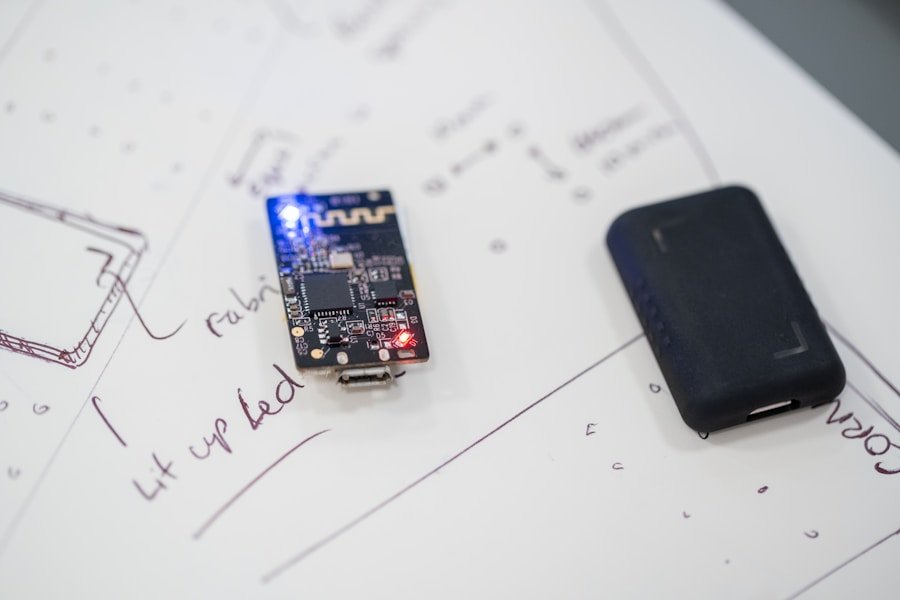In the modern digital landscape, cybersecurity has become a paramount concern for individuals, businesses, and governments. The growing reliance on technology and the internet has led to an exponential increase in the risk of cyber threats. Cyber attacks can take various forms, including malware, ransomware, phishing, and others, and can have severe consequences, ranging from financial losses to reputational damage.
Therefore, it is crucial for organizations to invest in robust cybersecurity measures to safeguard their sensitive data and systems from potential breaches. A vital component of a comprehensive cybersecurity strategy is intrusion detection. Intrusion detection systems (IDS) are designed to monitor network traffic for suspicious activity and alert administrators to potential security threats.
By detecting and responding to these threats in real-time, IDS can help organizations mitigate the risk of cyber attacks and minimize the impact of security breaches. In this context, Snort has emerged as a leading intrusion detection system, offering advanced capabilities for identifying and preventing cyber threats.
Key Takeaways
- Cyber security is crucial in today’s digital world to protect against cyber threats.
- Snort is an effective intrusion detection system that helps in detecting and preventing cyber threats.
- Snort works by analyzing network traffic and comparing it to a database of known threats to identify and prevent attacks.
- Using Snort for cyber security provides benefits such as real-time threat detection and customizable rule sets.
- Best practices for implementing Snort include keeping the system updated and regularly monitoring and analyzing alerts.
Introducing Snort: The Ultimate Intrusion Detection System
Platform Flexibility
It can be deployed on a wide range of platforms, including Windows, Linux, and macOS, making it accessible to organizations of all sizes and technical capabilities.
Detection Capabilities
Snort is known for its robust signature-based detection capabilities, which allow it to identify known threats based on predefined patterns and rules. In addition to signature-based detection, Snort also supports anomaly-based detection, which enables it to identify abnormal network behavior that may indicate a potential security threat.
Customization and Effectiveness
This combination of signature-based and anomaly-based detection makes Snort a highly effective tool for detecting and preventing a wide range of cyber threats, from common malware to sophisticated zero-day attacks. Furthermore, Snort is highly customizable, allowing organizations to tailor its detection rules to their specific security needs and requirements.
How Snort Works to Detect and Prevent Cyber Threats
Snort operates by analyzing network traffic in real-time and comparing it against a database of known threat signatures and behavioral patterns. When it detects a match between the network traffic and a known threat signature or abnormal behavior, Snort generates an alert that can be used to trigger an automated response or notify administrators of the potential security threat. This real-time detection and alerting capability is crucial for organizations looking to stay ahead of cyber threats and respond to security incidents promptly.
In addition to its detection capabilities, Snort also offers a range of preventive measures to help organizations mitigate the risk of cyber attacks. For example, Snort can be configured to block or quarantine malicious network traffic, preventing it from reaching its intended target and minimizing the impact of potential security breaches. Furthermore, Snort integrates seamlessly with other security tools and technologies, such as firewalls and intrusion prevention systems (IPS), to provide a layered defense against cyber threats.
This multi-faceted approach to cyber security makes Snort an invaluable asset for organizations looking to strengthen their defenses against evolving cyber threats.
Benefits of Using Snort for Cyber Security
There are numerous benefits to using Snort as part of your organization’s cyber security strategy. Firstly, Snort’s open-source nature means that it is freely available to download and use, making it a cost-effective solution for organizations with limited budgets. This accessibility has contributed to Snort’s widespread adoption across industries and sectors, from small businesses to large enterprises.
Additionally, Snort’s extensive community support means that users have access to a wealth of resources, including documentation, forums, and user groups, which can help them maximize the effectiveness of the tool within their specific environment. Another key benefit of using Snort is its high performance and low resource requirements. Unlike some commercial intrusion detection systems that can be resource-intensive and complex to manage, Snort is designed to be lightweight and efficient, making it suitable for deployment in a wide range of network environments.
This scalability and performance make Snort an attractive option for organizations looking to implement intrusion detection across their entire network infrastructure without compromising on performance or reliability. Furthermore, Snort’s regular updates and ongoing development ensure that it remains at the forefront of cyber security best practices and continues to evolve in response to emerging threats and attack techniques.
Best Practices for Implementing Snort in Your Network
When implementing Snort in your network, there are several best practices that can help you maximize its effectiveness and ensure that it integrates seamlessly with your existing cyber security infrastructure. Firstly, it is important to carefully plan your deployment strategy and consider factors such as network topology, traffic patterns, and security requirements. By conducting a thorough assessment of your network environment, you can tailor Snort’s configuration to align with your specific security needs and objectives.
Additionally, regular maintenance and updates are crucial for keeping Snort’s threat signatures and detection rules up-to-date. By staying abreast of the latest cyber threats and vulnerabilities, you can ensure that Snort remains effective in identifying and preventing emerging security risks. Furthermore, ongoing monitoring and analysis of Snort’s alerts and reports can provide valuable insights into your network’s security posture and help you identify areas for improvement or optimization.
Finally, it is important to integrate Snort with other security tools and technologies to create a comprehensive defense-in-depth strategy. By combining Snort with firewalls, IPS, antivirus software, and other security measures, you can create multiple layers of defense that work together to protect your network from a wide range of cyber threats. This integrated approach can help you maximize the effectiveness of Snort and ensure that your organization is well-equipped to respond to evolving security challenges.
Real-Life Examples of Snort in Action
Financial Institution Thwarts Phishing Campaign
A large financial institution implemented Snort as part of its cyber security strategy and was able to identify and block a sophisticated phishing campaign targeting its employees. By leveraging Snort’s advanced detection capabilities, the organization was able to prevent sensitive information from being compromised and minimize the impact of the attack on its operations.
Healthcare Provider Foils Ransomware Attack
In another example, a healthcare provider deployed Snort across its network infrastructure and was able to detect and block a ransomware attack before it could spread across its systems. This proactive response helped the organization avoid potential data loss and downtime, safeguarding its critical patient information and maintaining the continuity of its services.
Staying Ahead of Cyber Threats
These examples illustrate how Snort can be a powerful tool for organizations looking to stay ahead of cyber threats and protect their sensitive data from potential breaches. By leveraging Snort’s advanced detection capabilities and integrating it into a comprehensive cyber security strategy, organizations can mitigate the risk of cyber attacks and minimize the impact of security incidents on their operations.
Staying Ahead of Cyber Threats with Snort: Tips and Strategies
Staying ahead of cyber threats requires a proactive approach that leverages the full capabilities of Snort as part of a comprehensive cyber security strategy. One key tip for maximizing the effectiveness of Snort is to regularly review and update its configuration to align with your organization’s evolving security needs. By fine-tuning Snort’s detection rules and policies, you can ensure that it remains effective in identifying and preventing emerging cyber threats.
Another important strategy for staying ahead of cyber threats with Snort is to leverage its reporting and analysis capabilities to gain insights into your network’s security posture. By regularly reviewing Snort’s alerts and reports, you can identify patterns or trends that may indicate potential security risks or vulnerabilities within your network environment. This proactive approach can help you address potential issues before they escalate into full-blown security incidents.
Furthermore, ongoing training and education for your IT staff can help them maximize the effectiveness of Snort within your organization. By ensuring that your team is well-versed in Snort’s capabilities and best practices for deployment and management, you can optimize its performance and ensure that it remains a valuable asset in your cyber security arsenal. In conclusion, staying ahead of cyber threats requires a proactive approach that leverages advanced tools such as Snort as part of a comprehensive cyber security strategy.
By understanding the importance of cyber security, implementing best practices for deploying Snort in your network, and leveraging its advanced capabilities for detecting and preventing cyber threats, organizations can mitigate the risk of security breaches and safeguard their sensitive data from potential attacks. With its versatility, performance, and community support, Snort has established itself as the ultimate intrusion detection system for organizations looking to strengthen their defenses against evolving cyber threats.
FAQs
What is Snort?
Snort is an open-source network intrusion detection system (NIDS) that is capable of performing real-time traffic analysis and packet logging on IP networks.
How does Snort work?
Snort works by examining network traffic and comparing it against a set of rules to identify and alert on potential threats or security policy violations.
What are the key features of Snort?
Some key features of Snort include real-time traffic analysis, packet logging, protocol analysis, content searching, and detection of a variety of attacks and probes.
How can Snort help in staying ahead of cyber threats?
Snort can help in staying ahead of cyber threats by providing real-time alerts on potential security breaches, enabling organizations to take proactive measures to protect their networks and data.
Is Snort suitable for all types of networks?
Yes, Snort is suitable for all types of networks, including small, medium, and large-scale networks, as well as cloud-based and virtualized environments.
Is Snort easy to use and deploy?
Snort is known for its ease of use and deployment, with a user-friendly interface and extensive documentation available to assist users in setting up and configuring the system.












